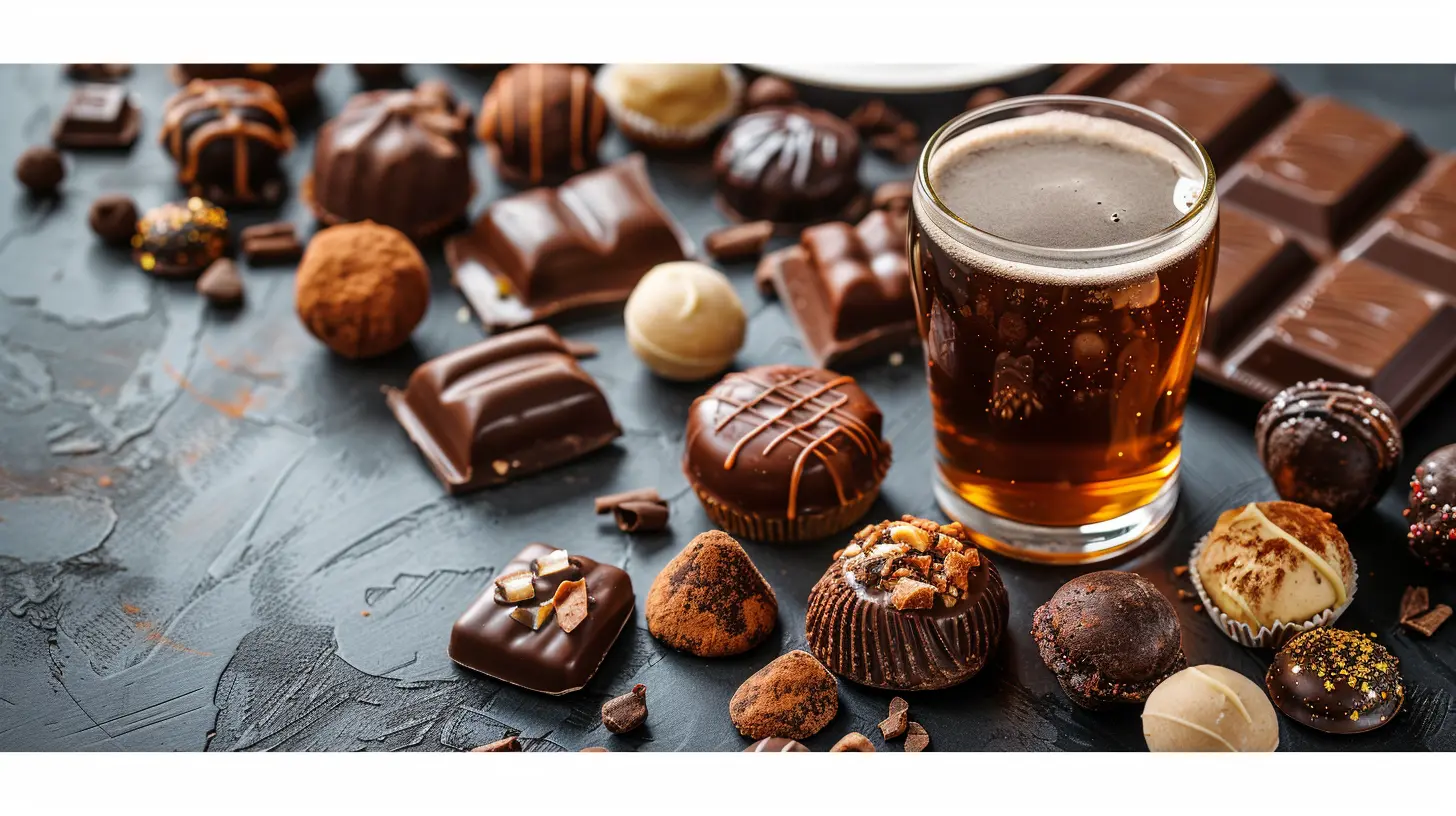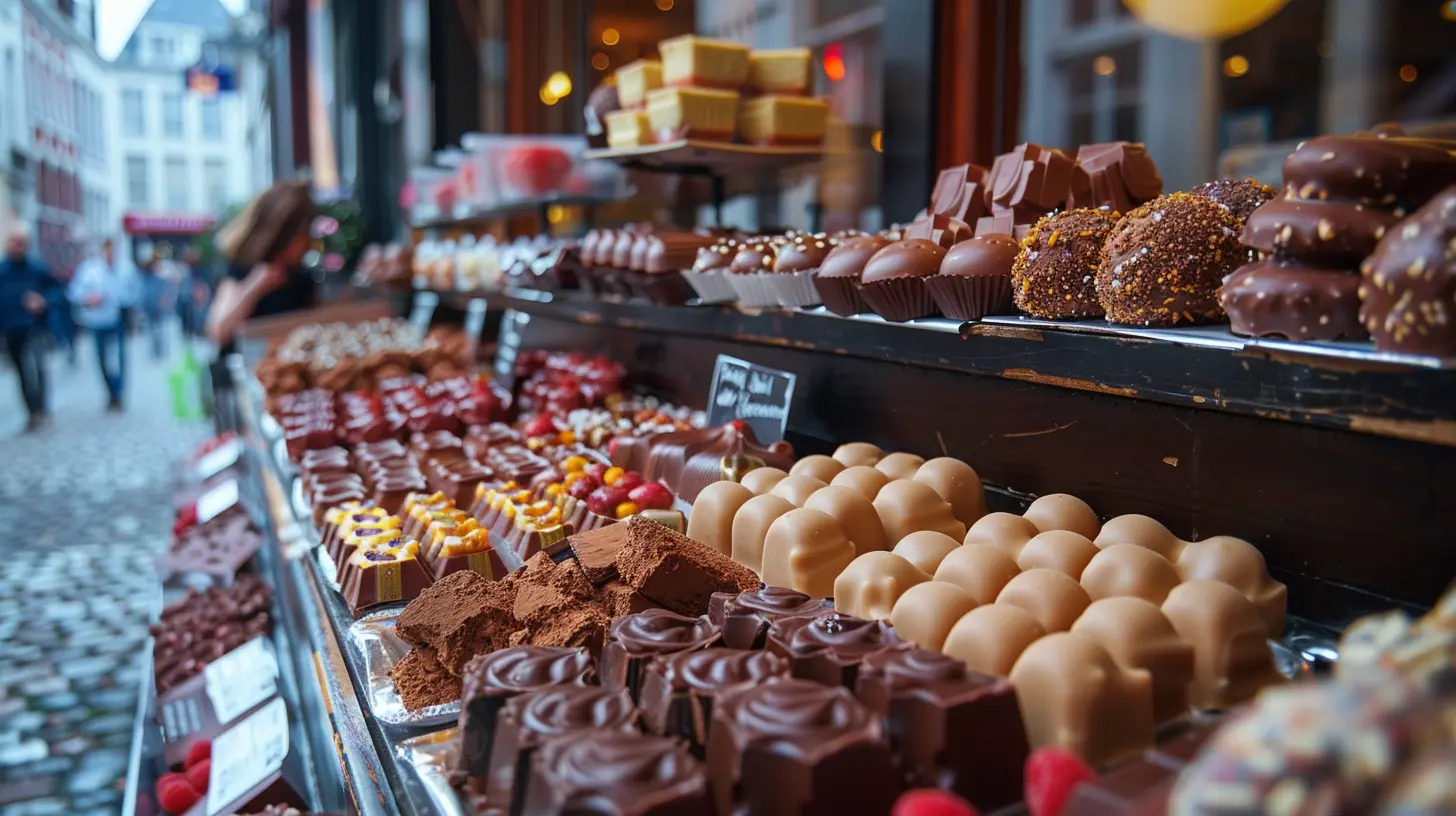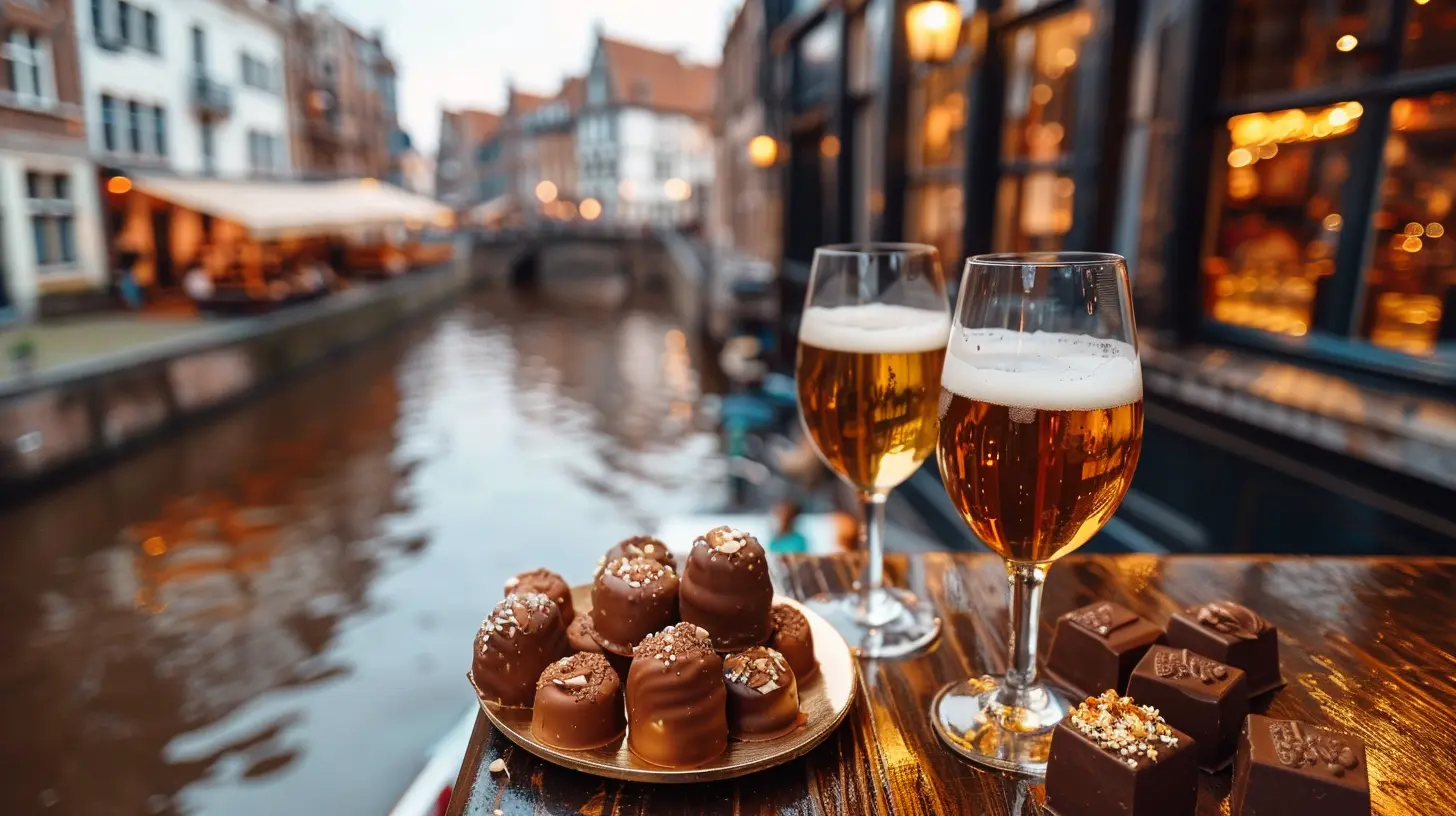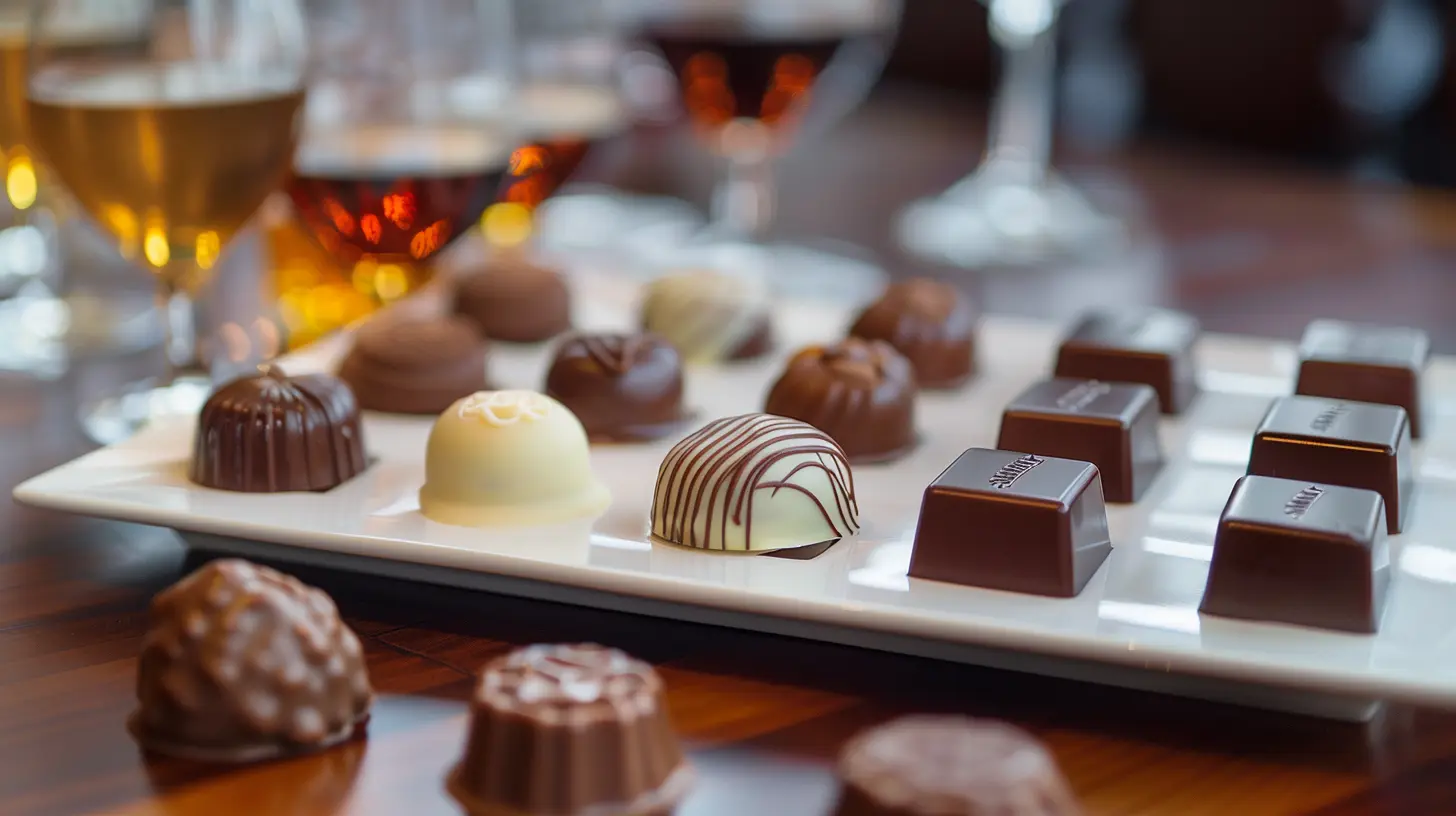A Dive into Belgium’s Best Chocolates and Beers
4 December 2024
Have you ever thought about what makes Belgium truly special? It’s not just the picturesque canals of Bruges or the medieval architecture of Ghent. If you're a foodie or a lover of all things delicious, your heart (and stomach) will be sold on Belgium’s two crown jewels: chocolates and beers. Yes, my friends, if there’s one thing Belgium does exceptionally well, it’s creating mouth-watering chocolates and crafting some of the world's finest beers.
But why chocolates? Why beers? And why does Belgium seem to excel in both fields? Well, grab a snack and a comfy chair, because we're about to dive deep into the world of Belgian indulgence.

The Belgian Chocolate Legacy: A Sweet Adventure

From Bean to Bar: The Belgian Way
Belgian chocolate isn't just any ordinary chocolate. It's got a rich history, steeped in tradition, and yes, a little bit of magic. The story begins in the early 1600s when cocoa beans first made their way to Europe. While many European countries adopted chocolate, it was Belgian chocolatiers who perfected the craft.But how do they do it? Belgium sets itself apart by adhering to strict guidelines for chocolate-making. For starters, Belgian chocolate must contain at least 35% pure cocoa. And unlike mass-produced chocolates, Belgian chocolatiers focus on quality over quantity. They source some of the finest cacao beans from places like Africa and South America, paying careful attention to the entire process—from bean to bar.
The Praline: Belgium's Sweet Masterpiece
Want to know what really put Belgian chocolate on the map? Pralines. The praline is Belgium's answer to the chocolate conundrum—how can you make something already amazing even better?In 1912, confectioner Jean Neuhaus created the first praline in Brussels. It was a filled chocolate made with a hardened outer shell and a creamy, flavorful center. And just like that, a legend was born. Nowadays, you can find pralines filled with everything from nut pastes to liqueur creams. Each bite offers a small adventure of flavor, waiting to be savored.
Some Belgian Chocolate Brands You Must Try
Alright, enough history. Let’s get to the good stuff: Where can you find the best Belgian chocolates? Well, you're spoiled for choice, but here are a few brands worth making room in your suitcase (or your stomach) for:- Neuhaus: The OG of Belgian chocolates. If you want to taste history, this is where you should start. Try their assorted praline boxes; they’re legendary.
- Godiva: A more commercial option but still absolutely decadent. Plus, they have plenty of global outlets, so you can experience Belgium's best chocolates right at home.
- Leonidas: Known for offering a huge variety of chocolates at relatively affordable prices. And no, affordable doesn’t mean they skimp on quality.
- Pierre Marcolini: If you’re into artisanal chocolates and want something a little fancy, this is your brand. Made with single-origin cacao beans, each piece is a work of art.
The Art of Chocolate Pairing
Before we dive into the world of Belgian beers, let me just say one thing—Pairing chocolate with alcohol is an art form many overlook. In Belgium, though, they’ve got it down to science.For instance, rich dark chocolate (above 70% cacao) pairs beautifully with robust red wines or even a stout beer. Meanwhile, milk chocolate with praline centers can complement lighter, fruitier wines or even a Belgian blonde beer. So, the next time you're sampling Belgian chocolates, don’t just reach for a coffee. Grab a glass of something a little stronger and see how the flavors intertwine!

Belgian Beers: Craftsmanship in a Bottle
Now, if chocolate is Belgium's sweetheart, beer is its proud, boisterous sibling. Belgian beer culture runs deep, and much like Belgian chocolates, there’s an enormous amount of variety to choose from. Whether you’re a fan of fruity, light ales or you love a bold, bitter brew, Belgium has something up its sleeve for you.A Brief but Tasty History of Belgian Beer
Belgium's love affair with beer dates back to medieval times when monks first began brewing beer in monasteries. Why monks? Well, water was often unsafe to drink back then, and the beer-making process naturally purified it. Good beer, in a sense, saved lives!Over time, Belgium became known for its diverse beer styles, from light and bubbly witbiers to strong Trappist ales. Belgium’s secret sauce? Tradition mixed with innovation. Belgian brewers have stuck to age-old techniques while subtly modernizing their recipes. You get the best of both worlds in every sip.
The Beer Styles You Need to Know
Belgium doesn’t just have a beer; it has hundreds of varieties. You could spend a lifetime sampling them all, but if you are short on time (or liver capacity), here are the must-try styles:1. Trappist Beers
Brewed by monks, Trappist beers come with a seal of authenticity. Only twelve Trappist monasteries around the world are authorized to brew this unique beer, and six of them are in Belgium. Trust me—Trappist beers live up to the hype. They’re rich, complex, and have a profound spiritual vibe (literally).Each monastery has its own style, but popular Trappist beers include Westvleteren (often hailed as the world’s best beer), Chimay, and Orval.
2. Lambic and Gueuze
Love something a little sour? Then Lambic beers are what you’re looking for. These are wild, funky beers brewed with spontaneous fermentation, meaning the yeast in the air does most of the work. The result is an incredibly unique flavor that varies from barnyard funk to fruity explosions.Gueuze is a blend of young and old Lambics, creating a smooth, sparkling beer with a tart kick. It’s like champagne’s rebellious cousin.
3. Belgian Blonde Ales
Easy on the palate, Belgian Blonde Ales are the perfect entry point if you’re just starting in the world of Belgian beers. These beers are light, slightly fruity, and malty with a gentle bitterness. Think of it as Belgium’s answer to a summer session beer.4. Dubbel and Tripel
For those who like their beers a bit stronger, Dubbel and Tripel are calling your name.- Dubbel: Darker and maltier, with flavors of caramel and dark fruits. It’s like a warm hug on a cold day.
- Tripel: Golden, bubbly, and deceptively strong (often around 8-10% ABV). It’s got a whiff of spice and a fruity sweetness that makes you forget how high the alcohol content is.
Some Belgian Beer Brands You Must Know
Ready to embark on your Belgian beer journey? Here are some brands you'll definitely need on your radar:- Westvleteren: If you want to try the Pope of Belgian beers, look no further than Westvleteren 12. This Trappist brewery is renowned for producing some of the finest (and most sought-after) beers in the world.
- Chimay: One of the more readily available Trappist beers, Chimay comes in several varieties, each with a slightly different twist on the classic style.
- Hoegaarden: Want something light and refreshing? Hoegaarden is a classic Belgian witbier, with subtle hints of orange peel and coriander. It’s perfect for sipping on a hot day.
- Duvel: A strong Belgian blonde beer that packs a punch with its 8.5% ABV but drinks incredibly smooth and crisp.
The Perfect Food Pairings for Belgian Beers
Craving something to nibble while you sip your Belgian beer? You’re in luck! Belgian beers are incredibly versatile when it comes to food pairings.- Trappist Ales: Pair with hearty stews, roast meats, or strong cheeses. The beer’s rich, malty flavors hold up well against intense umami flavors.
- Lambics and Gueuzes: These beers pair great with fatty or rich foods like duck, blue cheese, or even a rich chocolate dessert. The acidity cuts through the richness, creating a perfect harmony.
- Blonde Ales: Lighter beers like Hoegaarden and Leffe pair well with seafood, salads, or even light snacks like olives and nuts.

Conclusion: The Best of Both Worlds
When it comes to delicious food and drink, Belgium is in a league of its own. Whether you're satisfying your sweet tooth with world-class chocolates or sipping a meticulously brewed beer, this small country offers a big experience for your taste buds.The next time you’re in Belgium (or even if you're just picking up a Belgian product at your local store), remember: You're not just tasting chocolate or beer; you're indulging in centuries of craftsmanship and passion. So go ahead, treat yourself to a little bit of Belgium. You deserve it.
all images in this post were generated using AI tools
Category:
Foodie TravelAuthor:

Ian Powell
Discussion
rate this article
12 comments
Levi Mendoza
Indulging in Belgium’s chocolates and beers isn't just a treat—it's a rite of passage! Embrace the rich flavors and artisanal craftsmanship that make this country a culinary treasure. Ditch the guilt and dive into decadent truffles and robust brews. Your taste buds will thank you for this unapologetic adventure!
February 5, 2025 at 5:36 AM

Ian Powell
Absolutely! Belgium’s chocolates and beers are a must-try for any food lover. Cheers to unapologetic indulgence!
Elara Ruiz
How do Belgium's unique chocolate and beer pairings enhance the tasting experience?
January 31, 2025 at 5:43 AM

Ian Powell
Belgium's unique chocolate and beer pairings enhance the tasting experience by creating a harmonious balance of flavors; the rich, complex notes of chocolate complement the diverse profiles of Belgian beers, elevating both elements and revealing new taste sensations.
Raina McAdams
Explore Belgium's rich chocolate and beer heritage—each tasting tells a story, making for an unforgettable culinary adventure!
January 25, 2025 at 5:02 AM

Ian Powell
Absolutely! Belgium's chocolate and beer truly embody the nation's culture and history, offering a delicious journey through unique flavors and traditions. Enjoy the adventure!
Zevros Becker
Oh sure, because who wouldn't want to dive into a land where the primary food groups are chocolate and beer? A healthy lifestyle choice, right? Forget the gym; I’ll just lift another truffle. Cheers to balanced living! 🍫🍻
January 23, 2025 at 5:48 AM

Ian Powell
Absolutely! It's all about enjoying the pleasures of life—chocolate and beer included! Cheers to indulgence! 🍫🍻
Noemi Roberts
Great article! Belgium's chocolates and beers are a must-try. Any recommendations on local shops or breweries to visit?
January 15, 2025 at 3:52 AM

Ian Powell
Thank you! For chocolates, try Pierre Marcolini and Neuhaus, and for beers, don't miss Cantillon Brewery and Brasserie Dupont. Enjoy your visit!
Winter Wade
Unravel secrets hidden in every chocolate and beer—Belgium’s flavors await discovery!
January 4, 2025 at 5:36 PM

Ian Powell
Thank you! Belgium truly offers a delightful journey through its rich chocolate and beer traditions. Enjoy the exploration!
Elowis McFarlin
Hidden within the cobblestone streets of Belgium lies a tantalizing secret: the art of chocolate crafting and the brewing of extraordinary beers. Each bite and sip unfolds a story steeped in tradition and whispers of enchantment, beckoning adventurous souls to explore these delectable mysteries.
December 28, 2024 at 3:38 PM

Ian Powell
Thank you for capturing the essence of Belgium's rich chocolate and beer culture! It's a delightful journey worth savoring.
Bria Mendez
Belgium’s rich chocolate and beer culture is truly remarkable! From artisanal chocolatiers to unique breweries, each offering delightful tastings, this experience is a must for any foodie. Don't miss the chance to savor these world-renowned treats while exploring Belgium's charming towns!
December 26, 2024 at 4:40 AM

Ian Powell
Absolutely! Belgium's chocolates and beers are a culinary treasure, making each tasting a memorable experience. Don't miss out on discovering these delights in our charming towns!
Mara Mercado
Delicious finds await in Belgium!
December 19, 2024 at 4:10 PM

Ian Powell
Absolutely! Belgium truly is a treasure trove for chocolate and beer lovers alike. Enjoy your discoveries!
Leslie McMillen
This article masterfully highlights Belgium's rich chocolate and beer culture, showcasing artisanal craftsmanship and regional specialties. By exploring iconic brands and local breweries, readers gain a deeper appreciation for the country's delectable offerings, making it a must-visit destination for connoisseurs.
December 15, 2024 at 5:32 PM

Ian Powell
Thank you! I’m glad you enjoyed the article and appreciated the rich culture of Belgium's chocolates and beers. They truly are a delight for all connoisseurs!
Eva Long
Indulge in Belgium’s delights—every sip and bite is a taste of happiness!
December 8, 2024 at 5:59 AM

Ian Powell
Thank you! Belgium truly offers a unique blend of flavors that brings joy with every experience!
Vance Hardy
Belgium’s chocolates and beers are a delicious adventure waiting to be savored! Indulge your taste buds and explore the delightful flavors that make Belgium truly special! 🍫🍻
December 5, 2024 at 3:46 AM

Ian Powell
Absolutely! Belgium's rich tradition of chocolate and brewing offers a unique culinary journey that every foodie should experience. 🍫🍻
MORE POSTS

Luxury Meets Adventure: Extraordinary Experiences for Thrill-Seekers

How to Stay Safe During Natural Disasters While Traveling

Escape to the Desert: Weekend Trips to Desert Oases

Luxury Travel Trends: What’s Hot and What’s Timeless

Discover the Magic of Morocco: A Travel Guide

Volcanic Vibes: Tropical Islands Formed by Lava and Fire

The Ultimate Guide to Italy’s Charming Cinque Terre

Safe Travel for LGBTQ+ Travelers: Best Practices